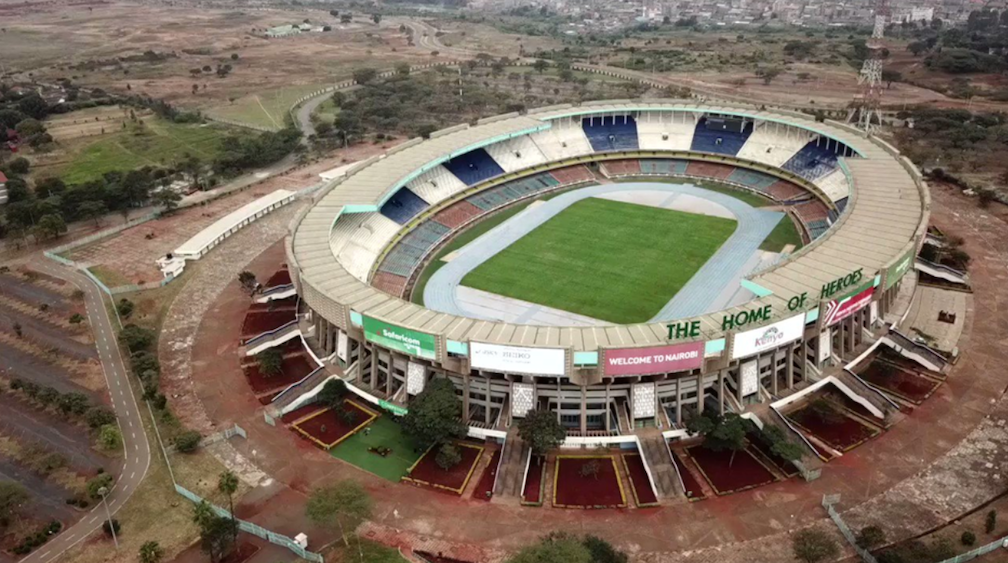Columbia University Seminar, Studies in Contemporary Africa Presents:
Of Centers, Margins, and Intermediacies: the Moi International Sports Complex, Nairobi
A presentation by Cole Roskam, with response by Brian Larkin
The Moi International Sports Center, which was designed and built between 1982 and 1987 by Chinese architects and engineers in Nairobi, the capital and largest city in Kenya, offers a useful case study through which a theory and history of intermediacy may be considered in relation to postwar architecture in Africa. Organized athletics and the architecture that supports them – stadiums, sports centres, athletes’ dormitories, and associated infrastructure – have been described as integral parts of a modern society’s everyday life. On one hand, social performances enabled by massive physical sites demonstrate a society’s capacity to coordinate and control relatively spontaneous conditions. At the same time, these events are expensive, logistical challenges that require significant financing, sophisticated design expertise, and reliable management systems over time. The People's Republic of China (PRC) has long recognized the ideological, diplomatic, and social value of these spaces. Its emphatic financial-, design-, and construction-related support for such facilities, both in Kenya and throughout the African continent more generally, underscores its own rhetoric with regards to their value and, more generally, Africa and China's entwined conditions and modern aspirations. Assessing the architectural historical significance of such work, and the Moi International Sports Complex in particular, requires new analytical methods that account for a stadium's symbolic and practical significance as both a general building type and its relationship to a country's politics, economy, and society. This presentation argues for a consideration of intermediacy in all of its political and architectural dimensions.
Cole Roskam is associate professor of architectural history in the Department of Architecture at the University of Hong Kong. His research explores architecture's role in mediating moments of transnational interaction and exchange between China and other parts of the world. He is the author of Improvised City: Architecture and Governance in Shanghai, 1843-1937 (University of Washington Press, 2019) and Designing Reform: Architecture in the People's Republic of China, 1970-1992 (Yale University Press, 2021). His writing has appeared in AD, Architectural History, Artforum International, Grey Room, and the Journal of the Society of Architectural Historians, among others. He has been a fellow at the Center for Advanced Study in the Visual Arts (Washington, DC), the Canadian Centre for Architecture (Montreal), and the University of Edinburgh.
Brian Larkin is Professor of Anthropology at Barnard College. Larkin’s research examines how media technologies organize the world in which we live and the modes of political and cultural life that result. Drawing on more than two decades of research in Nigeria, Larkin has challenged normative theories of media that tend to presume that the way technologies operate in the West is the way they operate everywhere. His interest, by contrast, has been to ask what would media theory look like if we started from the grounds of Nigeria and its prolific cultural and technological forms. Larkin has written on topics as diverse as loudspeaker wars on mosques and churches, infrastructural breakdown and disrepair, the love of Nigerians for Indian films, the degraded images of pirated cassettes, the emergence and proliferation of Nigerian films, and the enormous dynamism of religious movements in Nigeria. He is the author of Signal and Noise: Infrastructure, Media and Urban Culture in Nigeria, (Duke, 2008) and the co-editor of Media Worlds: Anthropology on New Terrain (California, 2000).

